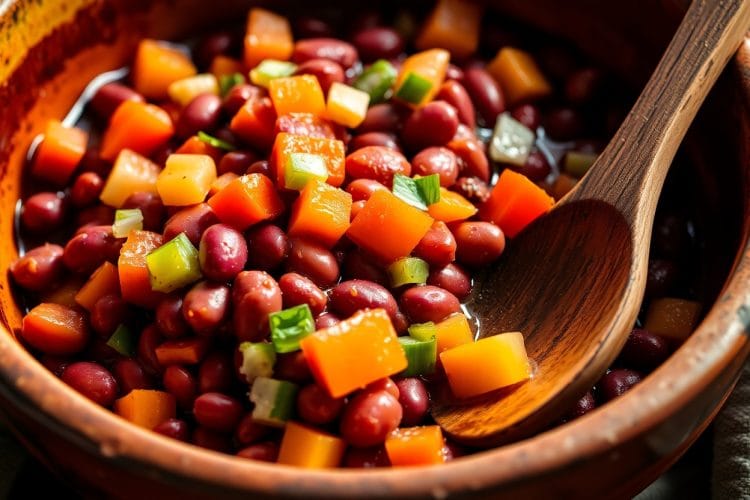
🥄 Why Red Beans Are a Nutritional Powerhouse
When we talk about superfoods, we often think of kale, berries, or avocados. But have you ever considered red beans as part of your diet? These small legumes pack a nutritional punch with their high protein, fiber, and a range of beneficial vitamins and minerals. But that’s not all — red beans are incredibly good for your health in many ways.
From supporting heart health to regulating blood sugar levels, red beans are a food you’ll want to include in your meals regularly.
💪 High in Protein and Fiber: Your Body’s Best Friend
Red beans are an excellent source of plant-based protein. If you’re looking for ways to boost your protein intake without turning to animal products, red beans are an ideal option. They contain about 15 grams of protein per cup, making them a great alternative for vegetarians and vegans.
What’s more, red beans are loaded with fiber, which plays a crucial role in:
- Supporting digestion
- Regulating blood sugar levels
- Reducing cholesterol levels
- Helping with weight management
The high fiber content also helps you feel fuller longer, reducing the temptation for unhealthy snacks.
🧡 A Heart-Healthy Food
Consuming red beans regularly can have significant benefits for your heart. Thanks to their high levels of antioxidants, including flavonoids, red beans help to reduce inflammation and oxidative stress. This not only supports heart health but may also help lower blood pressure and prevent arterial plaque buildup, both of which are risk factors for heart disease.
⚖️ Regulating Blood Sugar Levels
For people with diabetes or those concerned about blood sugar spikes, red beans are an excellent choice. They have a low glycemic index, which means they don’t cause rapid spikes in blood sugar. Instead, they provide a slow, steady release of glucose, making them a great addition to a balanced diet for managing type 2 diabetes or insulin resistance.
🧬 Rich in Antioxidants: Fight Free Radicals
Red beans are packed with antioxidants, including polyphenols, which play a significant role in fighting free radicals in the body. Free radicals are unstable molecules that can cause damage to cells, leading to chronic diseases and aging. By including red beans in your diet, you’re giving your body the tools it needs to neutralize these harmful compounds.
🍽️ How to Prepare Red Beans Without Losing Their Nutritional Value
✅ Best Cooking Methods:
- Boiling or simmering: Red beans should always be boiled for at least 30 minutes to break down harmful lectins and make them safe to eat. Soaking them overnight can help reduce cooking time.
- Cooking in soups and stews: Red beans can be added to soups, stews, and chili for added nutrition without compromising their texture or nutritional value.
⚠️ Avoid:
- Eating raw red beans: They contain toxins, including phytohemagglutinins, which can cause digestive distress if not properly cooked. Always ensure that beans are thoroughly cooked.
🌿 Fun Ways to Enjoy Red Beans
Red beans are versatile and can be added to a variety of dishes. Here are some fun and delicious ways to enjoy them:
- Make a hearty chili with red beans, tomatoes, and spices
- Add cooked red beans to your salad for extra protein
- Blend them into hummus or a bean dip
- Toss them in a stir-fry for an added protein boost
🌱 The Bottom Line: Why You Should Eat Red Beans Regularly
Red beans aren’t just a side dish — they’re a nutrient-packed powerhouse that offers a wide range of health benefits. From their ability to regulate blood sugar to providing essential protein and fiber, red beans are an excellent addition to your diet. Whether you’re looking to improve heart health, manage your weight, or simply eat more plant-based foods, red beans are a great choice.
✨ Eat for your health, and your health will thank you.